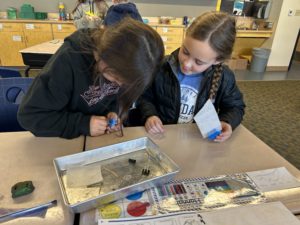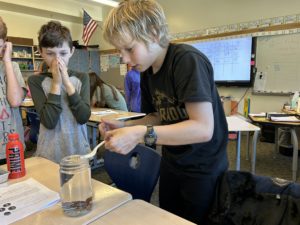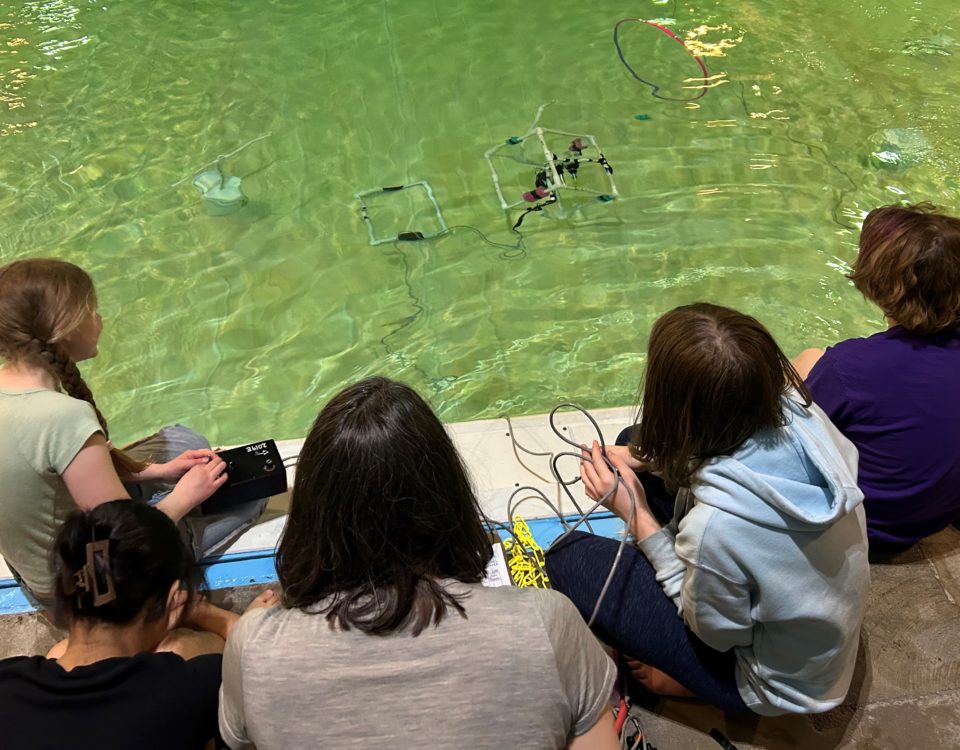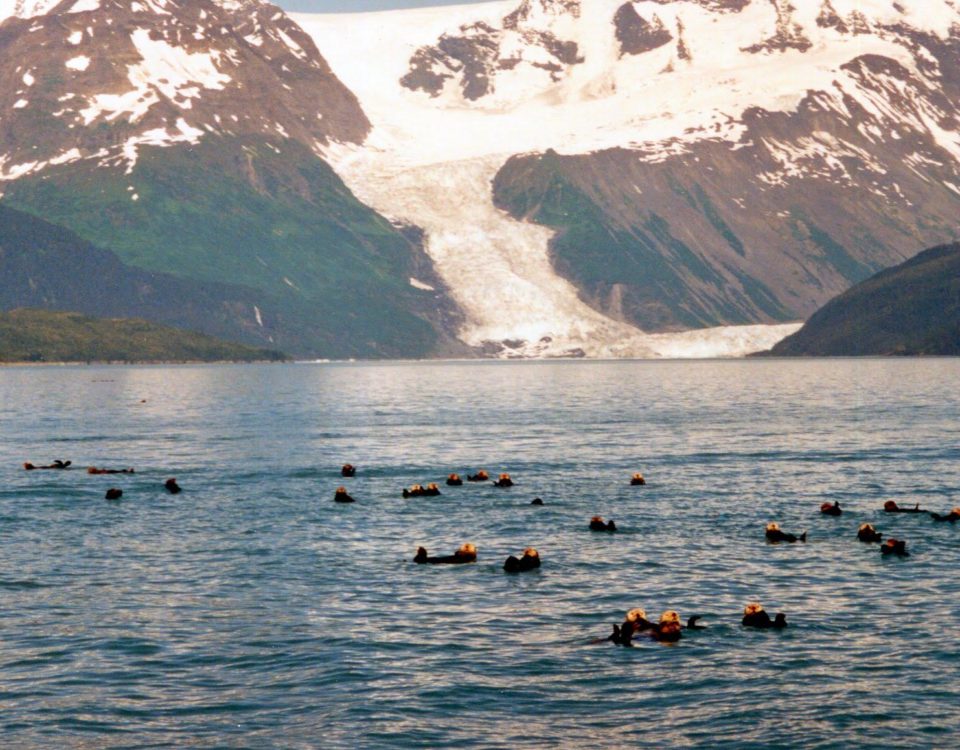Education Month in Review: September 2023
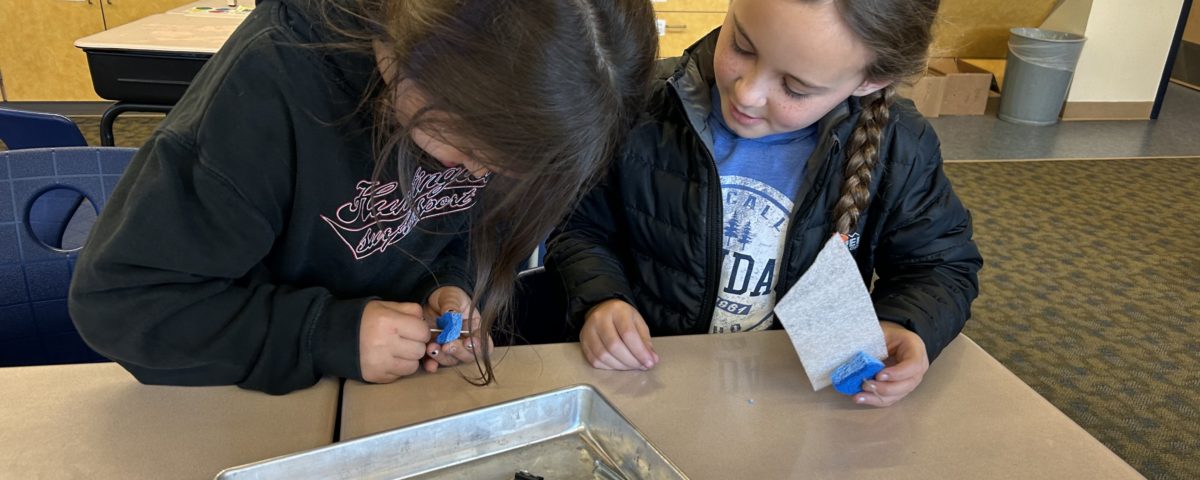
By Cristina Reo
Fall is upon us, as is the start of a new school year. With that comes fun family programming and entertaining – yet educational – adult events.
Sea Squirts is in full force, and we now offer two sessions: morning and afternoon. Our young explorers recently learned about salmon through imaginary play. They dug redds, put on salmon hats, and completed a migration obstacle course.
Little Dippers, our nature-based learning program for preschoolers, held their first sessions of the year. They immersed themselves in the outdoors on rainy days, sunny days, and everything in between. They explored and hiked; listened for nature sounds; observed changing colors in the muskegs; and learned about weather, plants, and water.
Fungus Festival was the second weekend of September. We partnered with The Net Loft to create a creative night of nature journaling. Dotty Widmann, owner of The Net Loft, taught participants the basics of nature journaling their “forest finds”. We discussed the anatomy of a mushroom and various nature journaling techniques. The education team also held a Discover Cordova at Nirvana Park. Our young explorers went on a fungus scavenger hunt, made mushroom hats, and bedazzled themselves in homemade mushroom themed pins.
September was “shark month” at the PWSSC. We held two in-person programs dedicated solely to sharks. Our Fun Friday participants learned about shark adaptations, including their sixth sense – ampullae of Lorenzini. Sabrina Garcia, ADF&G, joined us for Tuesday Night Talk, to talk about the biology of salmon sharks and her research on salmon sharks in the Bering Sea.
At the end of the month, we hosted an interactive event – Creatures of the Dock. As the south harbor emptied out for the upcoming reconstruction project, families took advantage of the open space and spent the afternoon exploring this familiar place in new ways. With the education team on site, kids and adults pulled buoys and tires out of the water to get an up-close look at the invertebrates that share the harbor with us.
We are bringing back our adult programming with the change of seasons. Back by popular demand, we partnered with the Reluctant Fisherman to bring a night of trivia fun. September’s theme was salmon. Contestants tested their fish knowledge as PWSSC’s research technician, Lydia Shaw, put together an eventful series of questions. We also hosted two Tuesday Night Talks in September: Cape St Elias Lighthouse – There be Dragons – The Past, Present, and Future of the Lighthouse and Sabrina Garcia’s salmon shark talk.
And finally, we are back at Mt. Eccles Elementary School for another year of Discovery Room.
- First grade took will be learning about sound waves. One of the ways we demonstrated a sound wave was with a contraption made of gummy bears, skewers, and duct tape!
- We met with the third-grade classes to discuss what makes a bird a bird. They built their own birds out of felt and then drew the bird and labeled its adaptations. Third grade also had two exploratory field trips practicing their engineering skills with wilderness building on Crater Lake Trail and got into the Fungus Festival spirit with a fungus walk on Haystack Trail.
- The fourth grade’s fall semester is dedicated to ecosystems. They learned about the nature of science and tested their scientific thinking with a series of puzzles. Using these new skills, they explored marine food webs. The first stop on the journey up the food chain was plankton. To understand how the structures of plankton support their survival, students created their own plankton and competed in plankton races testing their ability to float or drift.
- Sixth graders competed in the H2O Olympics, which is a series of challenges involving water. During the process, they witnessed cohesion and adhesion at work.


